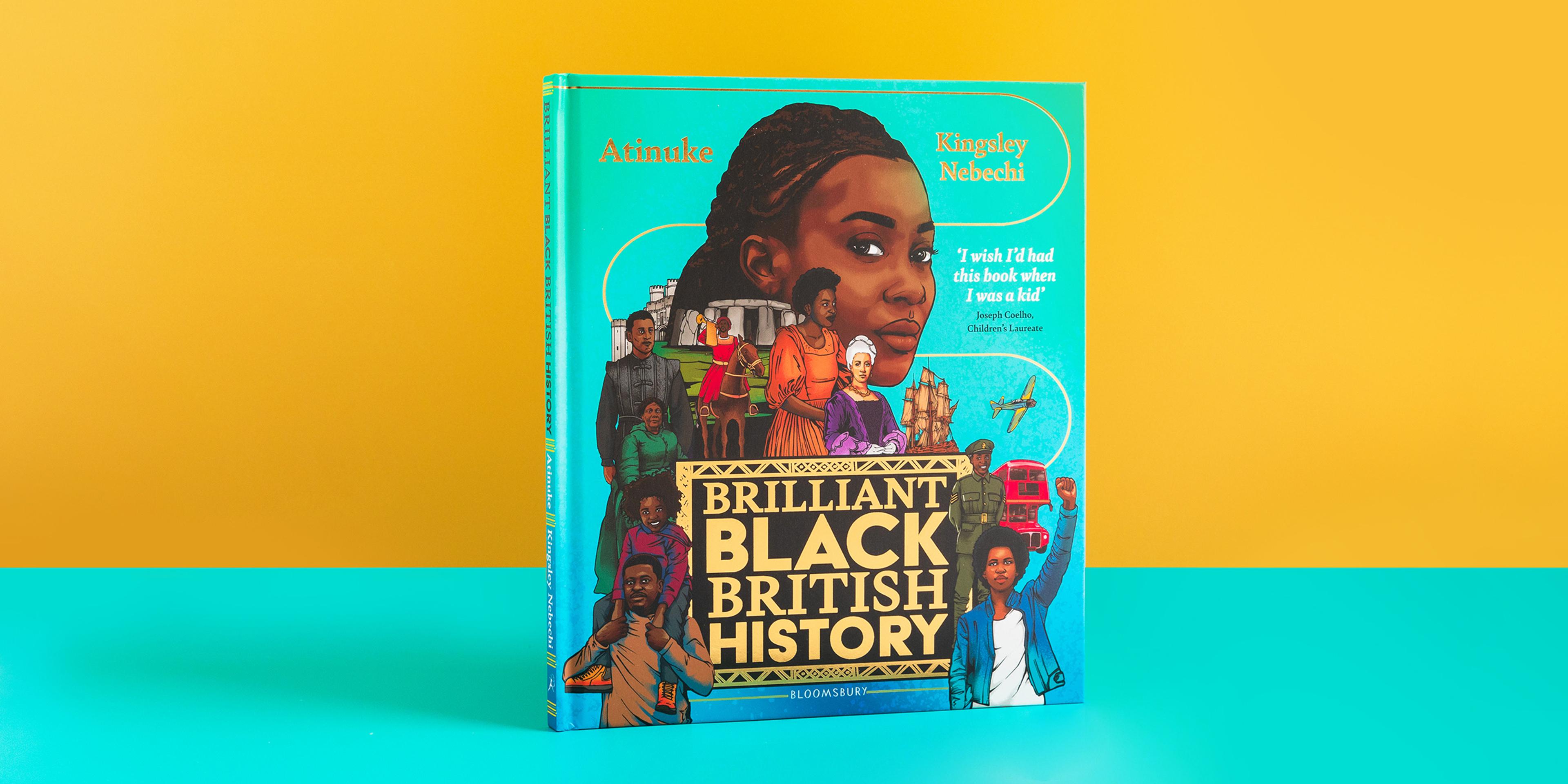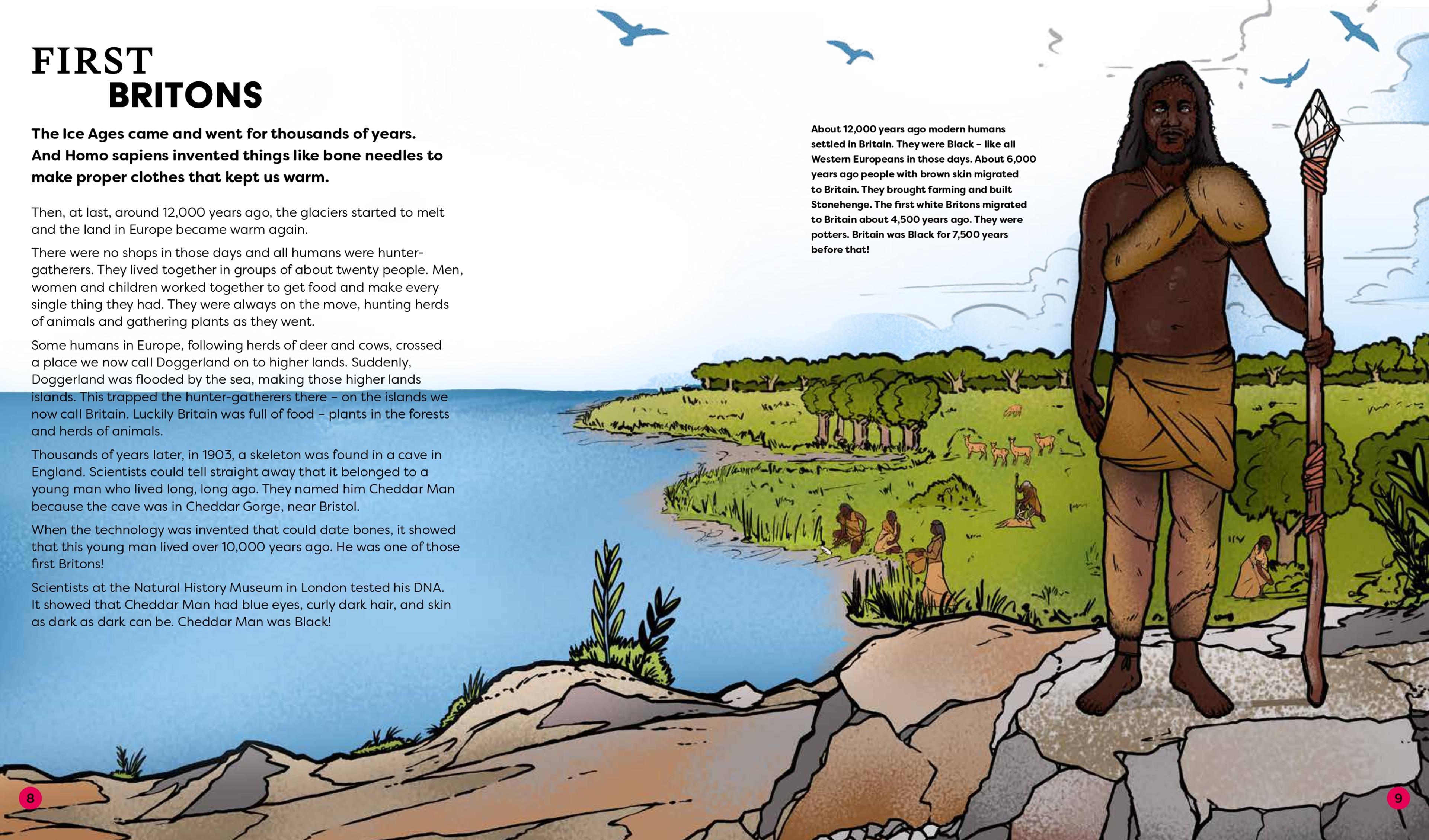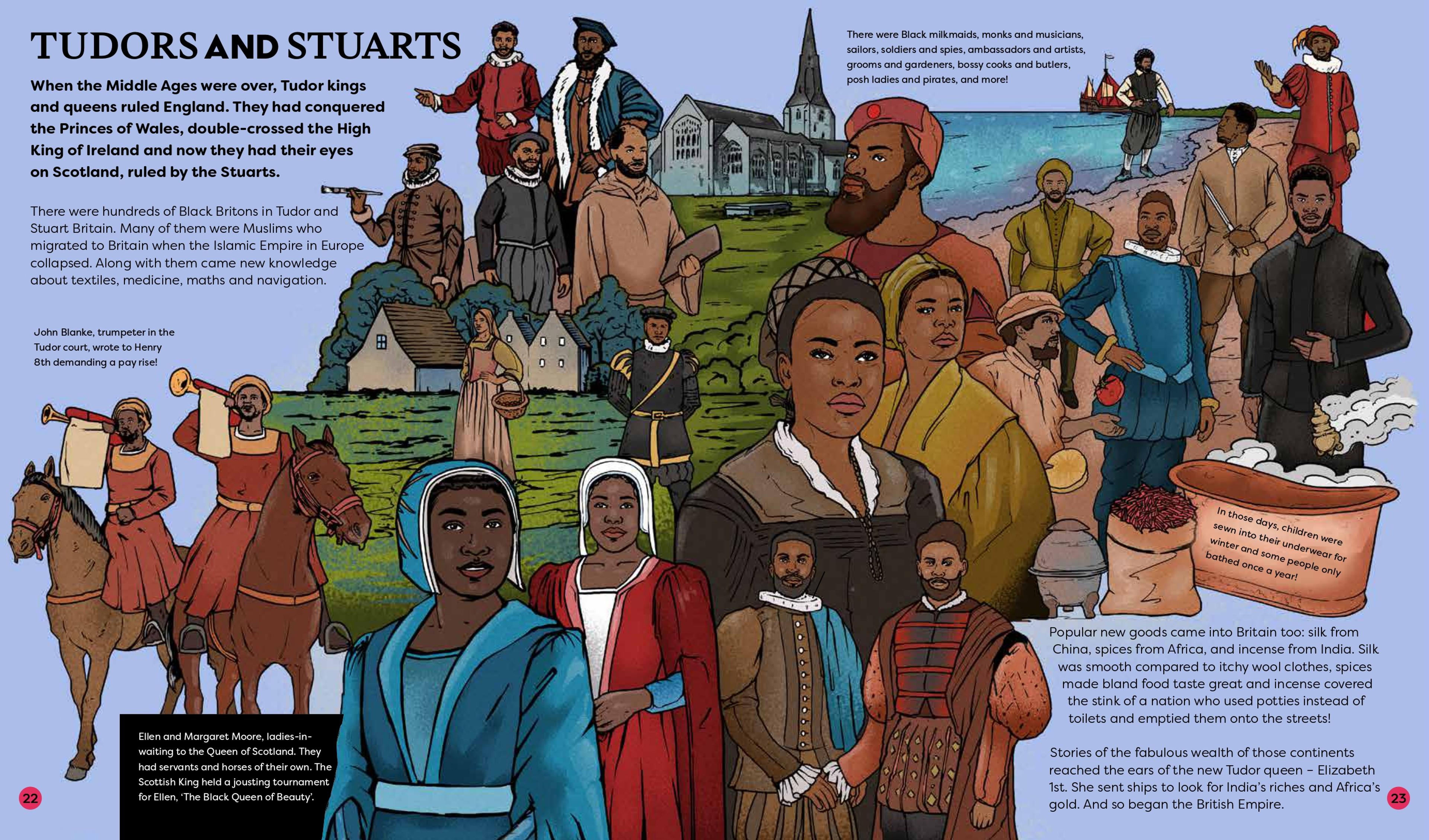A Q&A with Kingsley Nebechi on illustrating Brilliant Black History
by Kingsley Nebechi, Illustrator
Our Book of the Month for October is Brilliant Black British History, written by Atinuke and illustrated by Kingsley Nebechi. This vibrant book that tells the Black history of England, Scotland, Wales and Ireland, from prehistory to present day, sharing stories often ignored in history books.
We asked Kingsley about his experience of illustrating this book. Read about his detail-oriented research process, the challenges he faced and his advice for aspiring illustrators.

In your view, what is the role that illustration plays in bringing books like Brilliant Black British History to life?
I believe that the illustrator is the “visual storyteller” of the journey the author’s words take you on. We have the responsibility to honour the author’s story as well as being able to provide a visual experience for the reader to follow throughout the book. It’s very important for me to understand what the author is trying to achieve and communicate in a visual way to match the story or information provided in the book.
What were your key considerations while developing the visual style of the book?
One of the key considerations I focused on during the creation of this book is my approach to visual consistency. I wanted the book to feel like a journey through history with fully-illustrated historical figures and locations. I really enjoy crafting detailed illustrations for commissions involving historical events. The aim with the book was to find a balance between the detailed aspect of my day-to-day work and a more more simplified style for the younger readers.

How did you conduct research for this project?
A large chunk of my creative process was dedicated to researching reference imagery for outfits, locations and smaller details such as hairstyles. Being accurate is extremely important to me and it can be a lot more challenging when you take a more detailed approach to the storytelling style of the book.
It can be time consuming to gather research but it also allows you to be more confident in tackling some of the more detailed illustrations.

What was your working relationship with the author, Atinuke like? How did you collaborate on this book?
We initially liaised through the publisher, their designers and our agents. Bloomsbury (the publisher) provided me with a few rough designs for the layouts as well as the text from the book for research purposes.
Atinuke and I met a little bit later down the creative process of the book. The beginning stages were helpful in developing a visual style and a specific approach to illustrating the spreads. Once we met, I was also able to learn more about her which is another extremely important aspect of collaboration. When I visualise an author’s story, meeting them can add so much more life and passion to the project.
My goal is to always honour the historical events as well as the Author’s work.
What was the biggest challenge you faced while illustrating the book and how did you overcome it?
The biggest challenge was learning some of the information for the first time. The book covers a lot of unfortunate and sensitive events. Having the responsibility to illustrate those moments meant that I needed a full understanding of what had happened in order to create the right set of illustrations.
Working on this book has massively improved my skills as a storyteller, artist and researcher. There is power in challenging yourself to do things that you may not be 100% confident about. It can be very rewarding if you endure the difficult parts and stick with it till the end of the process.

What advice would you give to illustrators hoping to work on non-fiction books?
Be brave! Non-fiction books can be really challenging. At times, the information can be heavy to digest but it’s really important to step outside your comfort zone. Sometimes a little doubt can creep in throughout the creative process. You might worry about not doing enough or making mistakes.
It’s important to explore and push yourself to develop your own artistic voice. There are many authors out there who need illustrators willing to take on that task to tell very specific stories the world needs.